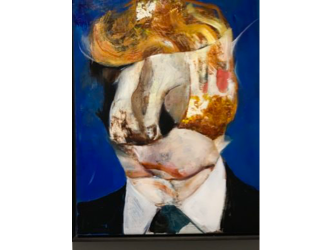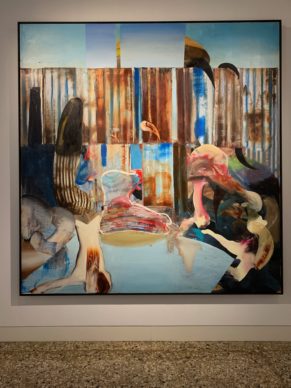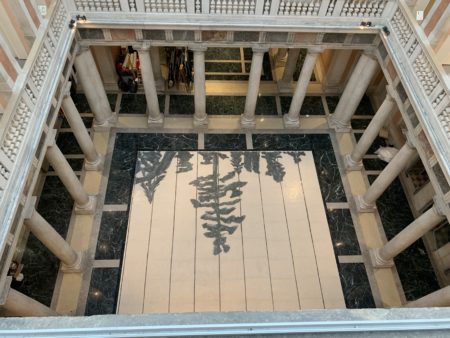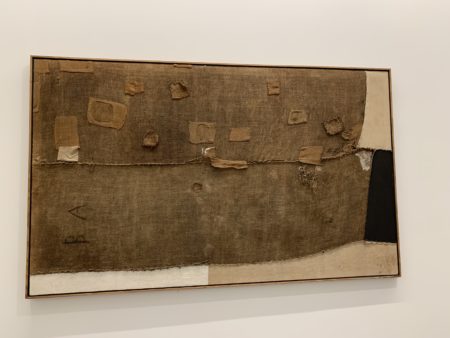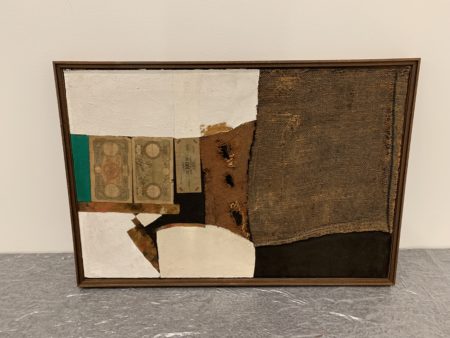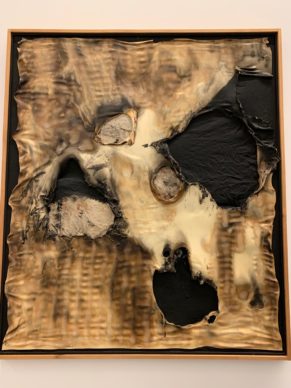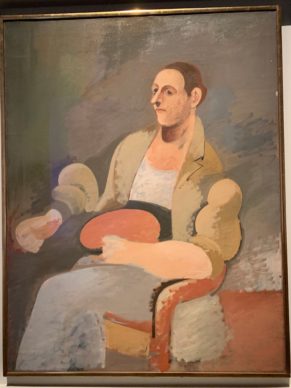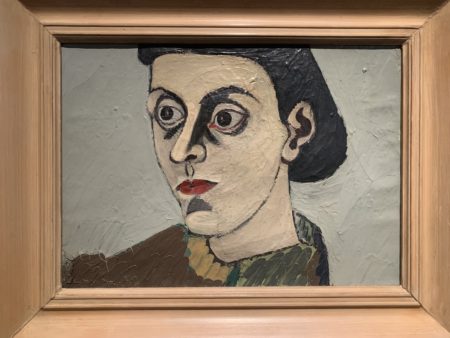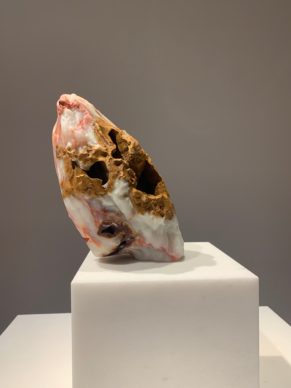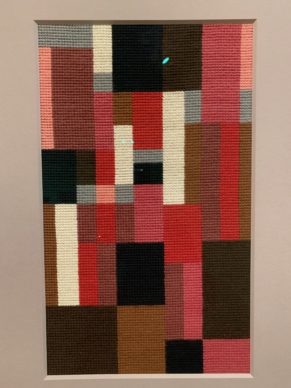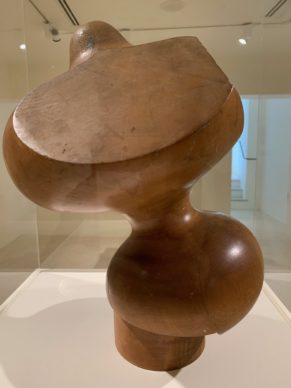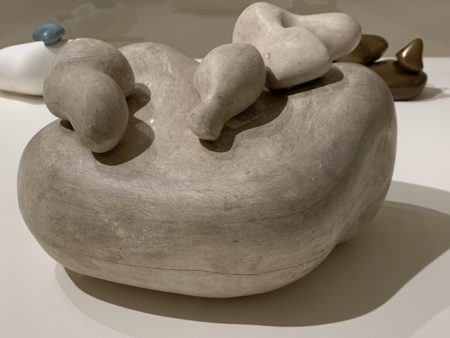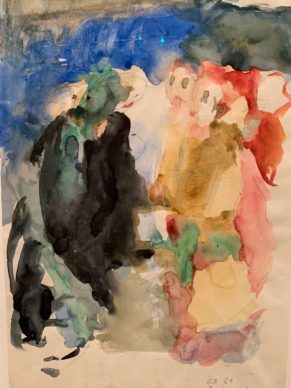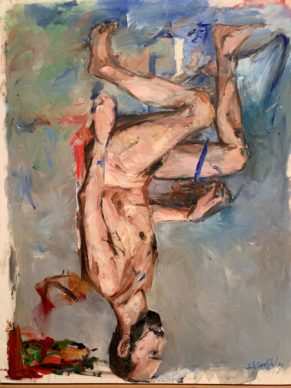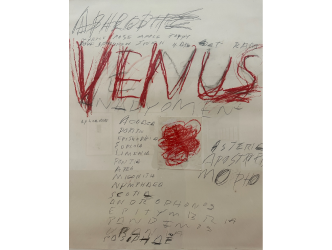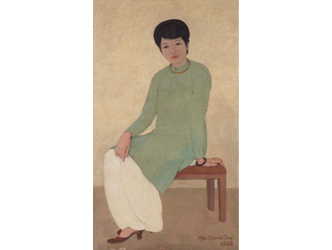Classical exhibitions
The Venice Biennale has become such an important moment in the global art calendar that countless events now congregate around it. They tend to be of a more classical nature than those at the national pavilions and the international pavilion of Ralph Rugoff (cf. the two reports on the subject), and are generally of a remarkable quality.
Their existence is due – with a few exceptions – to the intervention and funding of art galleries. The phenomenon has even transformed into a battle between great professionals.
It is in large part thanks to funding from the gallery specializing in the Italian avant-garde, Tornabuoni, that the Alberto Burri exhibition on the island of San Giorgio can take place. Gagosian is behind the organization of the Baselitz exhibition at the Gallerie dell’Accademia. Hauser & Wirth are sponsoring “Forg in Venice” on the work of German painter Gunther Forg. Thaddaeus Ropac is staging the exhibition of the fascinating young Romanian painter Adrian Ghenie at the Palazzo Cini. And more often than not there’s nothing, or virtually nothing, on sale at these big shows. It’s a display of the creation itself but also of their power and prestige…
Luc Tuymans at the Palazzo Grassi
I’ve dedicated an entire report, which can be seen here, to this Belgian painter born in 1958, who catalogues his obsessions in paint in a blurry style often composed in muted and monochrome hues. The exhibition is all in the suggestions.
Until 6 January. www.palazzograssi.it
Alberto Burri at the Cini Foundation
He’s the great Italian modern artist who’s still not widely known enough, despite the fact that the Guggenheim in New York dedicated an exceptional retrospective to him in 2015.
Burri (1915-1995) was a rebellious spirit and former prisoner of war who on his return, despite having studied medicine, turned towards art. The autodidact wanted to express the poverty and sadness of a depleted postwar Italy. He is no humanist. He is dark. He embarked upon a unique kind of work using humble materials like sewn burlap cloth, before tackling the transformation of materials like plastic, among others. The exhibition of 50 works staged by the Burri foundation in collaboration with the Tornabuoni gallery is powerful and didactic.
It’s Bruno Corà, the president of the Burri foundation, who is behind this small yet masterful retrospective. He explains that Burri became aware very early on of the importance of abandoning the principle of representation.
Watch the video to find out more.
Until 28 July www.cini.it/eventi/mostra-burri-la-pittura-irriducibile-presenza
Arshile Gorky at the Ca’Pesaro
He was once an artist who was fascinated by Cézanne, then by Picasso, then by Léger, then by Matta. He is known as a surrealist thanks to André Breton, but also as one of the first abstract expressionists. He is American, but he re-christened himself with the surname of a Russian novelist. This is the story of Arshile Gorsky (1904-1948), the unhappy tale of a painter who put his heart and soul into searching for himself by desperately looking to modern European painting and who when he found himself, killed himself, after he developed an incurable illness.
The Venetian exhibition has the merit of bringing together 80 works which reflect his highly influenced trajectory well. The co-curator Edith Devaney, who is also a curator at the Tate in London, says that he’s important because he paved the way for American abstract expressionism, having absorbed the early 20th century avant-garde.
Watch the video to find out more.
Barry X Ball at the Ca’ Pesaro
Two rooms in the municipal museum of contemporary art, with the collaboration of the Fergus McCaffrey gallery, are devoted to the American artist Barry X Ball, who here is inspired by and revisits in other materials the deliberately roughly hewn work of Franco-Italian sculptor Medardo Rosso (1858-1928), who incidentally features in the Ca’ Pesaro collections. Golden calcite, pink or white Iranian onyx, and Mexican white onyx are used to reproduce scanned forms, as the artist explains.
Watch the video to find out more.
I’ve already talked about his work in the context of the Tefaf Maastricht fair in March this year (cf. the report).
Until 22 September https://capesaro.visitmuve.it
Jannis Kounellis at the Prada Foundation
The Greek artist born in 1936, who was part of the Italian Arte Povera movement and was exhibited in 2016 at La Monnaie in Paris (see the report with the interview of the artist in video) is the subject of a masterful retrospective of 60 artworks at the Prada Foundation, the first since his death in 2017. This paradoxical man, who described himself as a painter yet who made installations, often used raw materials and everyday objects for their evocative value. Coal, for example, acts as a reference to a dark atmosphere, to Victor Hugo and to the traces left by the black material, and also to the time it took for this material to come into being. The most spectacular display here is a series of 19 old wardrobes hanging open horizontally, reminiscent of a coffered ceiling like the ones found in Renaissance Italy, open with its secrets finally revealed. The “Prada palace” with its luxurious interiors lends itself particularly well to this exercise. Germano Celant, the curator of the exhibition, believes that if Kounellis is important it is because he was the first to give art a life that it didn’t have through incorporating animals, fire or fragrances.
Watch the video to find out more.
Until 24 November http://www.fondazioneprada.org
Jean Arp at the Peggy Guggenheim collection
Need we be reminded that the Franco-Swiss modern sculptor Jean Arp (1886-1966) was one of the greats? Dada, abstraction, in stone, bronze, wood, plaster and even embroidery (yes, a man who embroiders in 1919!): he was an experimental genius. See his relief works made from painted wood: three-dimensional paintings composed of swathes of colour from the 1920s. See his lunar fruit from the 1930s, a kind of oozing mollusc in aluminium, or his “sculpture to be lost in the forest” from the same era, composed of bronze turds. The exhibition sums up his creation in 70 objects arranged throughout the intimate small white rooms, where it finds a mysterious three-dimensional harmony. A real pleasure.
Until 2 September http://www.guggenheim-venice.it/
Baselitz at the Accademia
Georg Baselitz is often placed in the pantheon of German contemporary artists of his generation, in the company of Gerhard Richter and Sigmar Polke. This exhibition is remarkable in that it showcases the artist’s brilliance in his use of the paintbrush and his execution of the portrait, but in spite of it all Baselitz remains in his rightful place: beneath these two giants. Richter is an exceptional painter as well as being a true conceptual artist who works on the idea of the image and its reproducibility. Polke was a visionary polymorph painter who was permanently exploring. Baselitz, to escape the diktat of figuration/abstraction, decided in 1969 to paint his subjects upside down. That’s it. But it wouldn’t be a waste of time to pay a visit to the exhibition, which is beautiful.
Until 8 September http://www.gallerieaccademia.it
Support independent news on art.
Your contribution : Make a monthly commitment to support JB Reports or a one off contribution as and when you feel like it. Choose the option that suits you best.
Need to cancel a recurring donation? Please go here.
The donation is considered to be a subscription for a fee set by the donor and for a duration also set by the donor.

